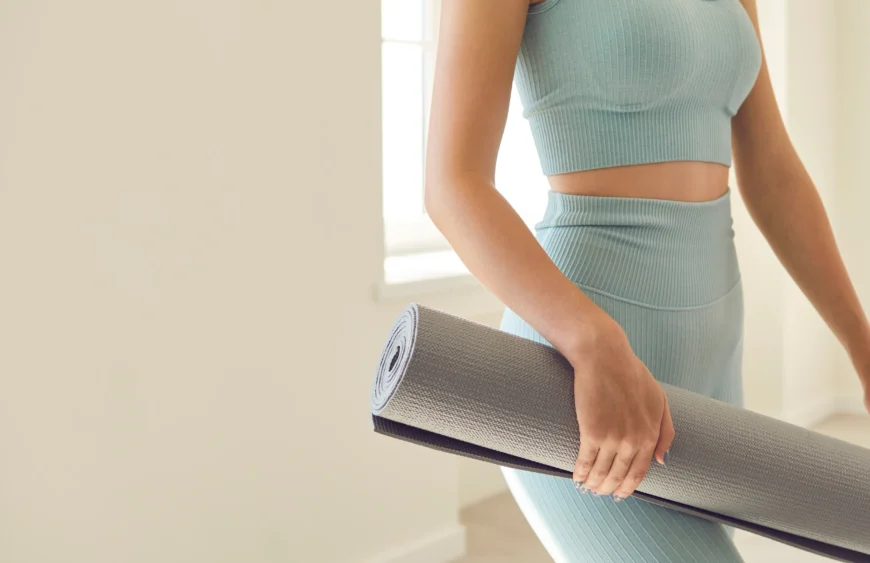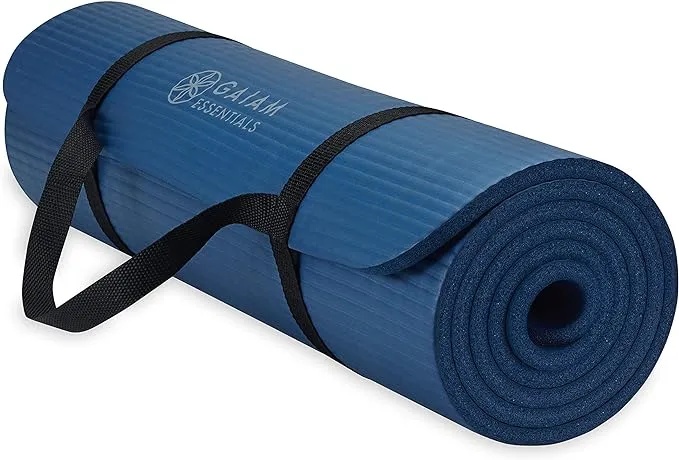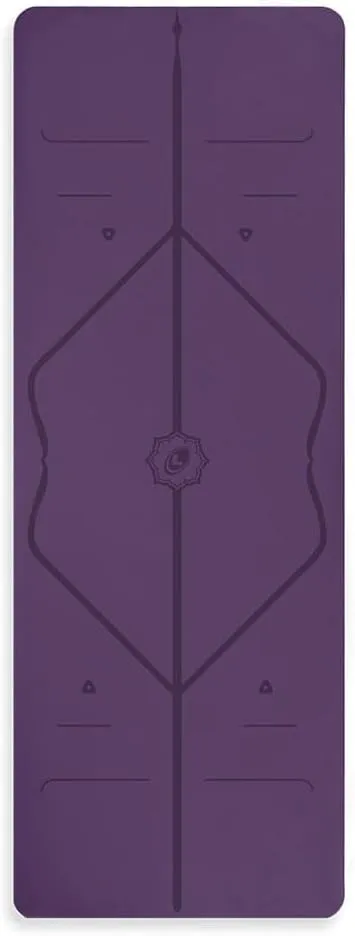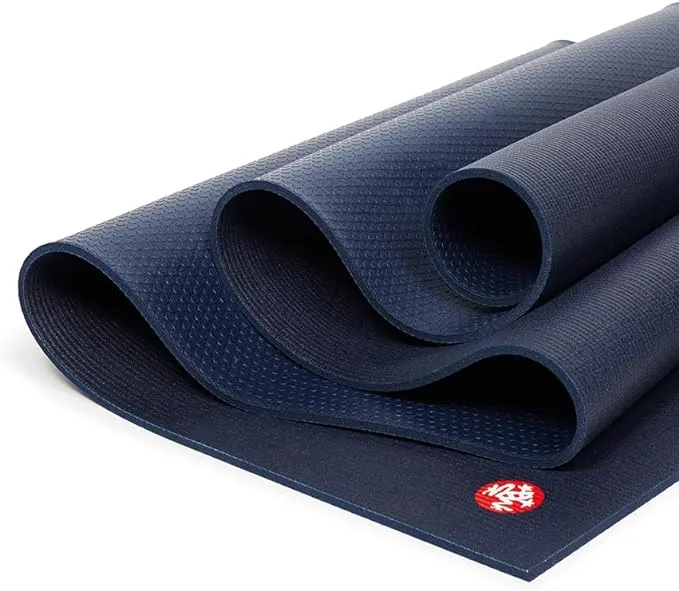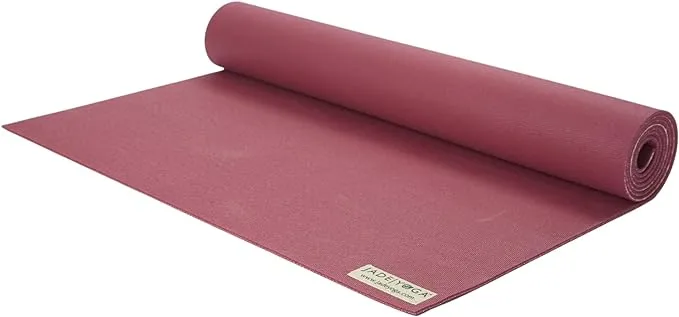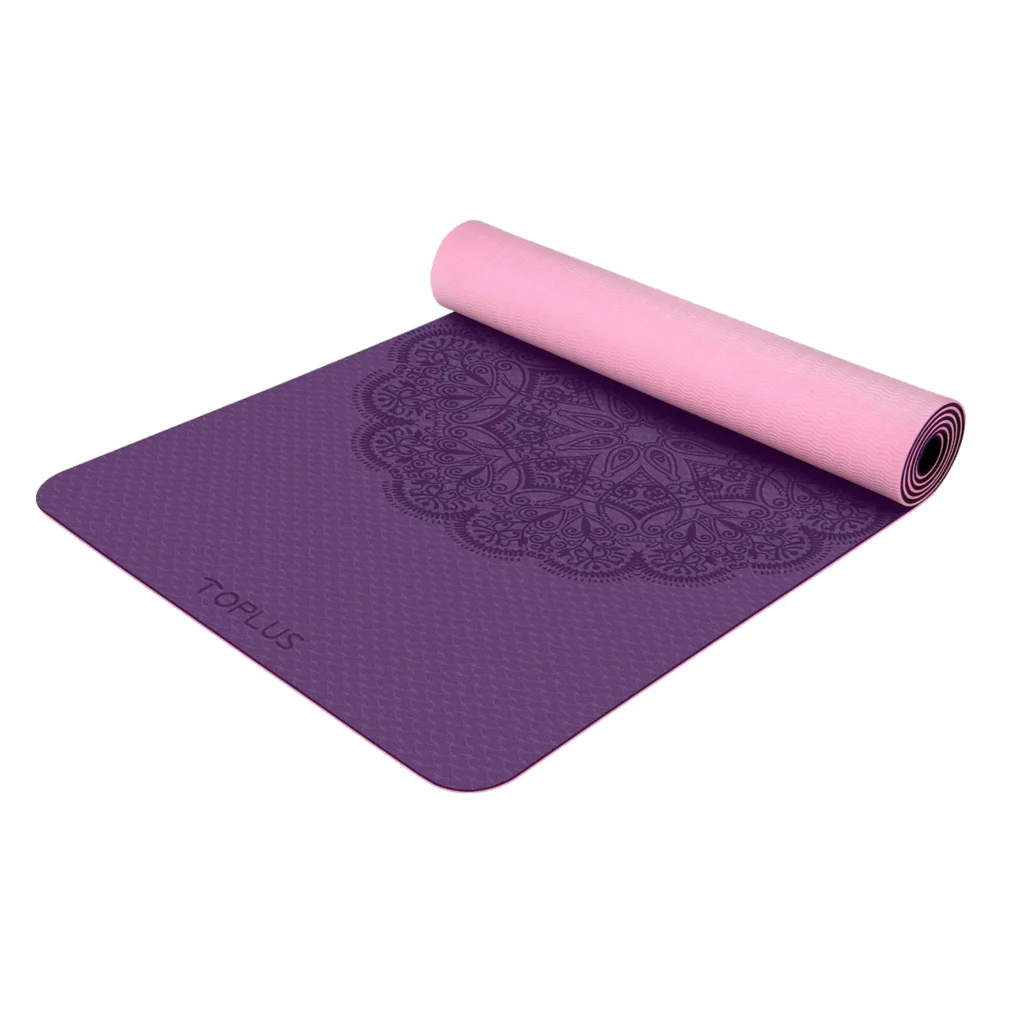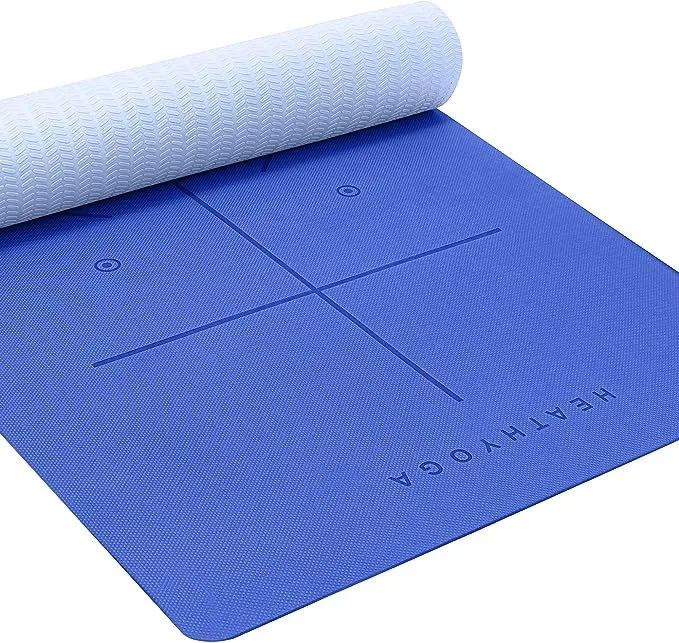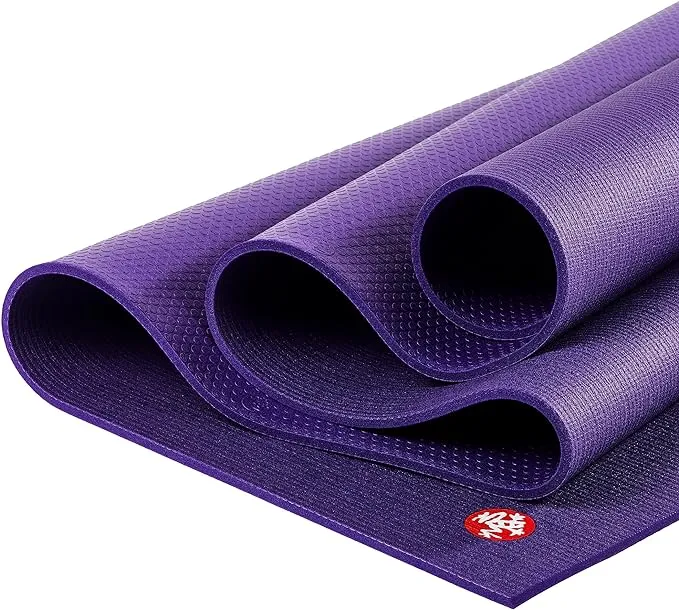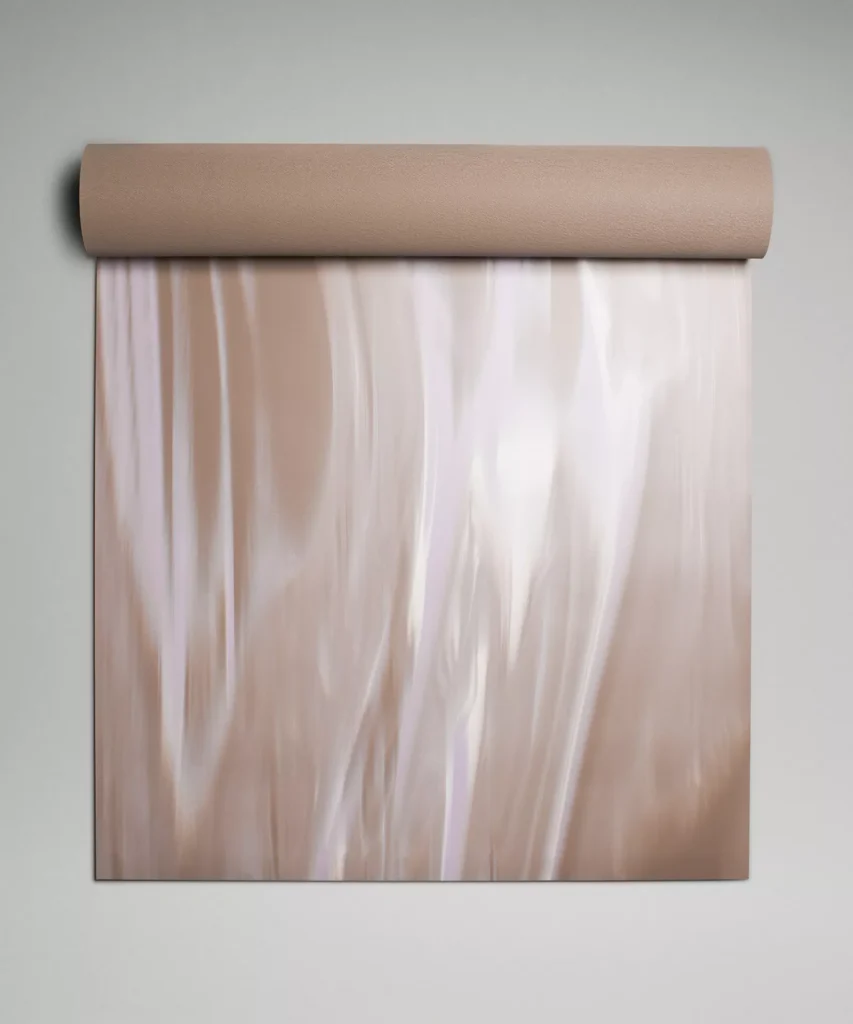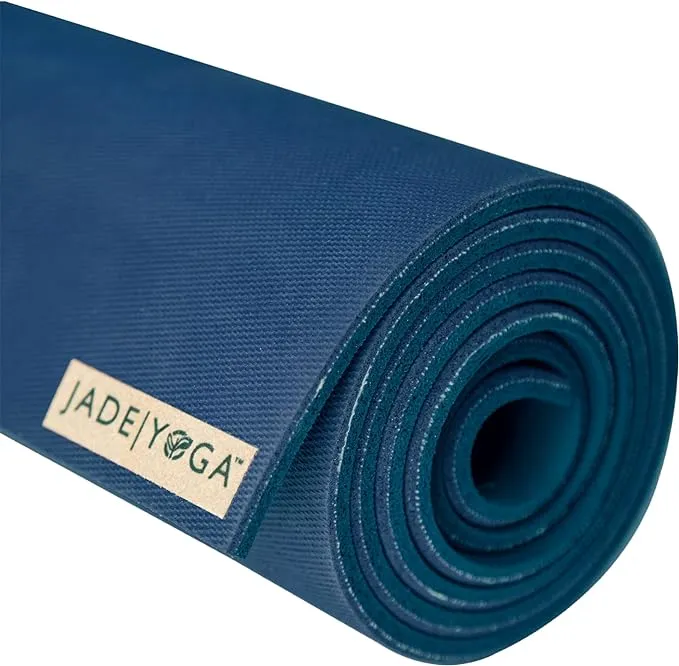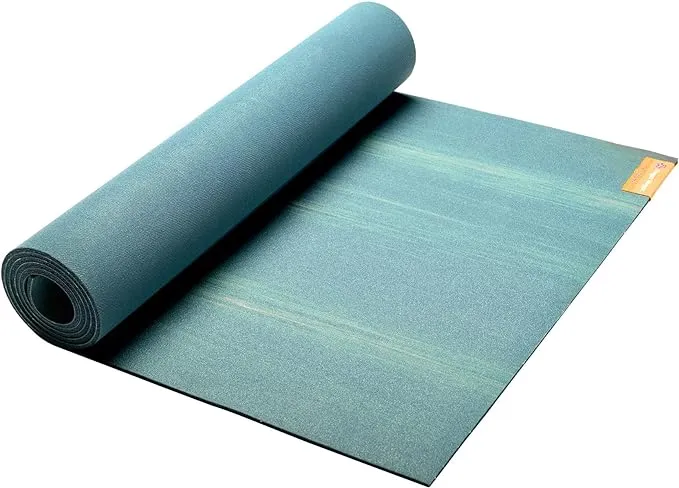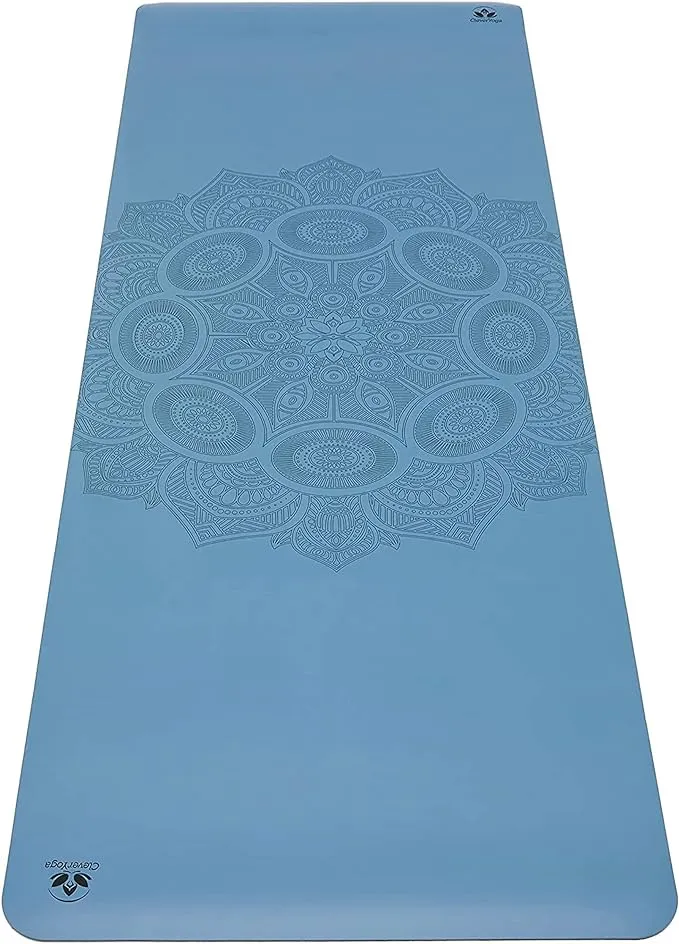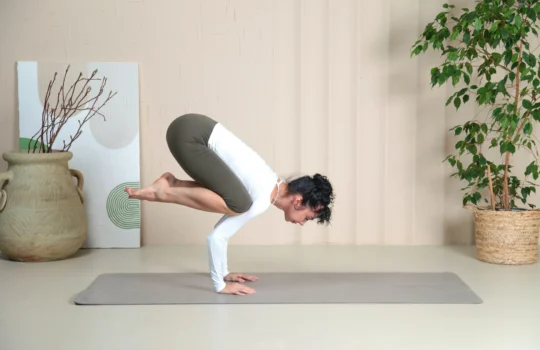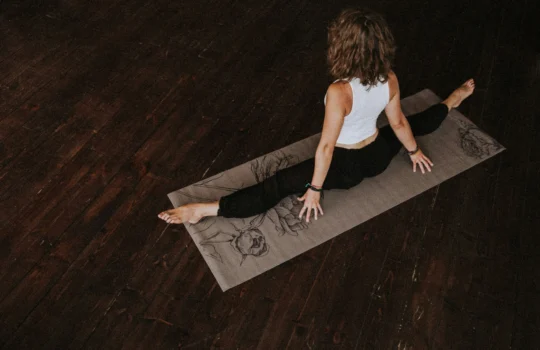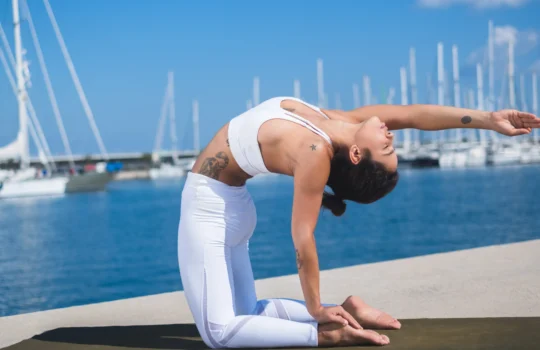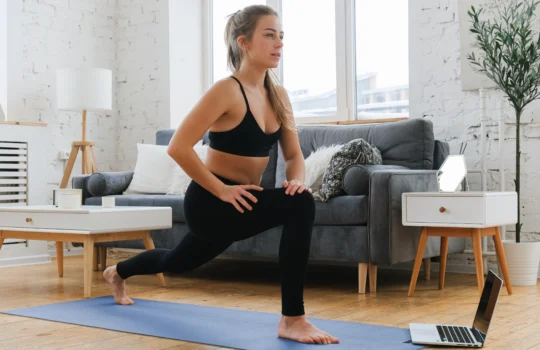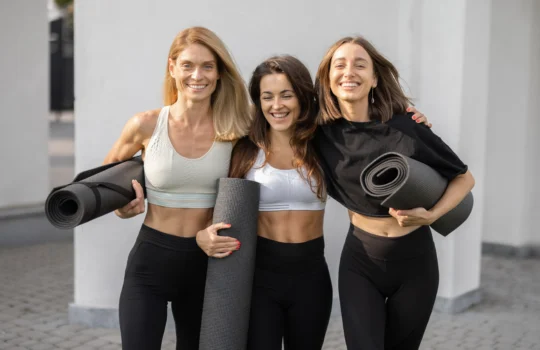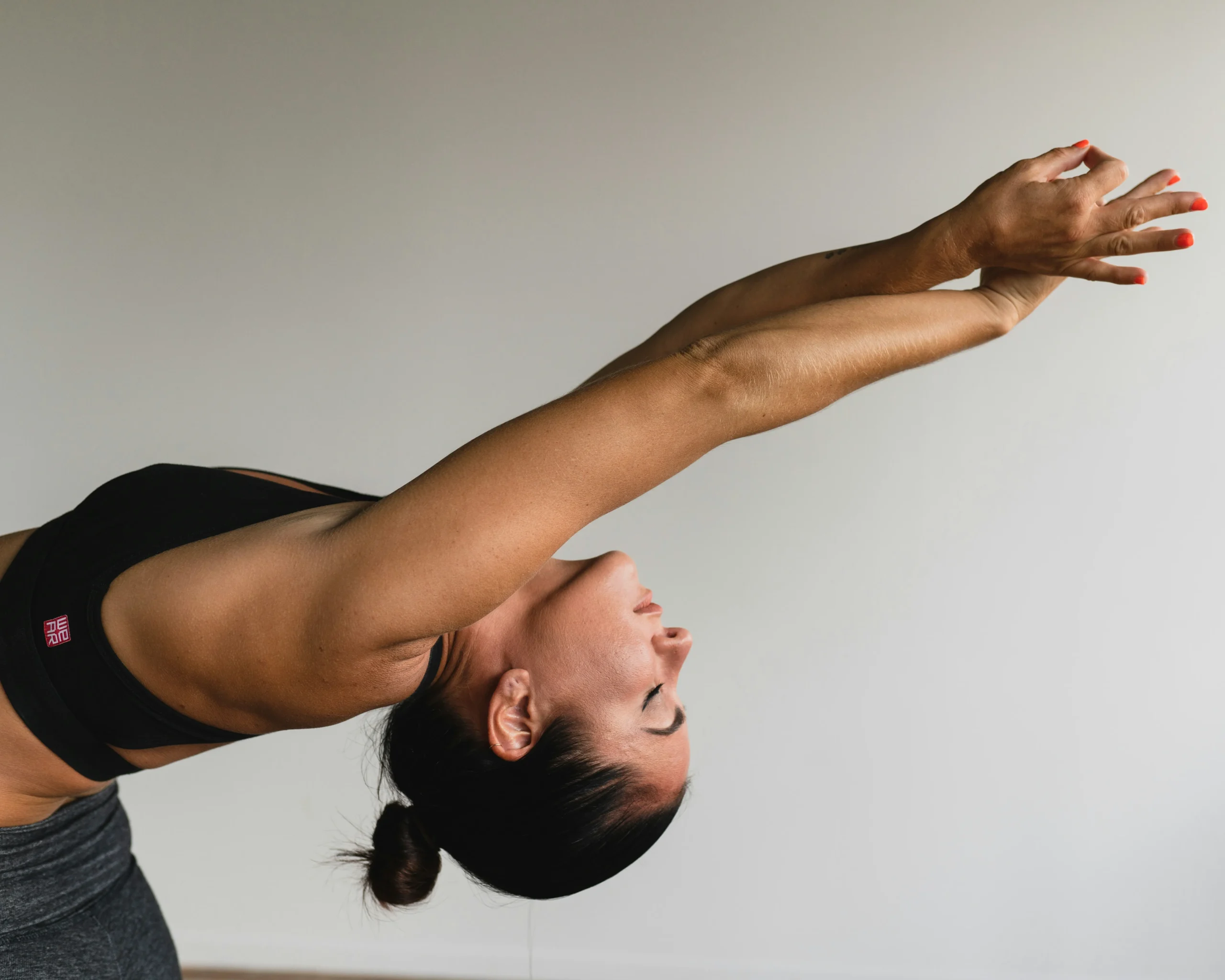Why Choosing the Right Yoga Mat Matters
Imagine stepping into a tranquil room, the scent of incense wafting through the air, and a neat row of yoga mats laid out on the floor, each promising a personal island of serenity. This is where your journey to mindfulness and physical wellness begins, and believe it or not, the yoga mat you choose can significantly impact your practice.
Selecting the right yoga mat isn’t just about aesthetics; it’s about enhancing your practice, ensuring safety, and maintaining comfort. A good mat provides the foundation for every pose, whether you’re a beginner trying to nail the basics or an advanced yogi mastering intricate balances. The right mat grips the floor securely, cushions your joints during intense poses, and helps define your personal space in a crowded class.
Moreover, with the rising popularity of yoga worldwide, the variety of mats available can be overwhelming—ranging from eco-friendly options to high-tech designs. This guide isn’t just about picking a yoga mat; it’s about discovering a companion that aligns with your yoga journey, one that supports every breath and movement with unwavering stability.
Table of Contents
1. What Makes a Great Yoga Mat?
A great yoga mat is more than just a piece of equipment; it’s a catalyst for transformation. Here are the key features that elevate a simple mat into a great one:
- Material: The choice of material affects the mat’s texture, stickiness, eco-friendliness, and sponginess. Common materials include PVC (durable and sticky), natural rubber (eco-friendly and grippy), TPE (lightweight and recyclable), and natural fibers like jute or cotton (breathable and sustainable).
- Thickness: Yoga mats typically range from a thin 1/16 inch to a plush 1/4 inch. Thinner mats are great for balance-focused practices as they keep you close to the ground, while thicker mats provide extra cushioning, ideal for therapeutic practices or those with joint issues.
- Grip and Texture: A mat’s grip is crucial for safety and performance. A good mat should have enough texture to provide traction without impeding movement. This is vital for maintaining poses and alignment without slipping, especially in sweaty conditions.
- Durability: A mat that flakes and wears quickly can be frustrating and a poor investment. Look for mats designed to withstand your style of yoga and frequency of practice. Durability also ties into eco-friendliness—longer-lasting mats mean less waste.
- Size and Portability: Your mat should fit your body and your practice space. While most mats come in a standard size, taller yogis might prefer a longer mat. Portability is also key for yogis on the go; lighter mats or those with easy-to-carry features like straps are preferable for travel.
- Ease of Maintenance: A great yoga mat should be easy to clean and maintain. Materials that repel dust and odor while being easy to wipe down can make a significant difference in how often you use your mat.
These characteristics ensure that a yoga mat can meet the needs of various practices and preferences, making each session on the mat as fulfilling as possible. As you consider these features, think about how each aligns with your personal yoga goals and what you most need in a practice companion.
2. Top 5 Things to Consider Before Buying Your Yoga Mat
Choosing the perfect yoga mat can feel like a quest for balance in your yoga practice. Before you decide, consider these top five factors that can influence your choice and enhance your yoga experience.
Size and Portability
First up, consider the size of the mat. Standard yoga mats are about 68 inches long, but if you’re taller than average, you might want a mat that’s 72 inches or longer. The width can also vary, providing extra space for more dynamic movements. Additionally, think about how you’ll transport your mat. If you’re always on the go, look for options that are lightweight and come with a carrying strap or bag.
Material Matters
The material of your yoga mat influences its texture, stickiness, eco-friendliness, and even smell. Common materials include:
- PVC: Highly durable and offers excellent stickiness.
- Rubber: Provides a good grip and is usually eco-friendlier than PVC, but can be heavy.
- TPE (Thermoplastic Elastomer): A more eco-friendly option than PVC, TPE is lightweight and has moderate durability.
- Cork: Naturally antimicrobial and offers a unique texture that improves grip when wet.
- Jute and Cotton: Eco-friendly and breathable but may not provide as much cushioning.
Choose a material that aligns with your personal values, especially if sustainability is a priority for you.
Thickness and Comfort
The thickness of your mat can greatly affect your comfort, especially if you have sensitive joints or practice yoga on hard surfaces. Standard mats are about 1/8 inch thick, providing a good balance between cushioning and stability. Thicker mats, around 1/4 inch, offer more cushion and are ideal for restorative practices, but they can make balancing poses more challenging.
Texture and Stickiness
Texture affects how much slipping and sliding you do. It provides physical barriers to sliding (whether you’re in a sweaty downward dog or holding a low lunge). A stickier mat will hold you in place better, but the feel of the texture is a personal preference. Some like it smooth; others prefer a more tactile surface.
Price vs. Quality
Finally, consider your budget. Yoga mats can range from $10 to over $100. It’s tempting to go for a cheaper mat, but consider this an investment in your yoga journey. More expensive mats tend to be more durable, have better grip, and are often made from higher-quality, eco-friendlier materials. Balancing cost and quality can ensure that you get the best value for your money.
By keeping these five aspects in mind—size and portability, material, thickness and comfort, texture and stickiness, and price vs. quality—you’re better equipped to choose a yoga mat that not only supports your practice but also reflects your lifestyle and values. With the right mat, each session can be a step toward greater balance and fulfillment in your yoga journey.
3. The Best Yoga Mats for Beginners: Top 7 Recommendations
Embarking on your yoga journey is exciting, and having the right yoga mat can make all the difference. Beginners need mats that provide comfort, stability, and a little room for growth. Here are the top seven yoga mats that are perfect for beginners, offering a blend of quality, comfort, and affordability.
1. Gaiam Essentials Thick Yoga Mat
The Gaiam Essentials mat is ideal for those who need extra padding. At 2/5 inch thickness, it’s excellent for restorative classes and anyone needing additional joint support. It includes a carrying strap and comes in various vibrant colors, adding a touch of personal style to your practice.
2. Liforme Original Yoga Mat
Praised for its revolutionary “AlignForMe” system, this mat helps beginners position their hands and feet properly. The Liforme mat offers exceptional grip and is made from eco-friendly materials, making it a sustainable choice for the environmentally conscious yogi.
3. Manduka PROlite Yoga Mat
Manduka is a well-respected name in yoga gear, and the PROlite mat is perfect for beginners who are serious about pursuing yoga. It offers durability, excellent cushioning, and a lifetime guarantee, making it a mat that grows with your practice.
4. Jade Harmony Yoga Mat
Made from natural rubber, the Jade Harmony mat provides a great balance of traction and cushion. It’s eco-friendly and for every mat sold, Jade plants a tree, making it a purchase you can feel good about.
5. TOPLUS Mandala Embossing Yoga Mat
The TOPLUS Yoga Mat is another excellent option for beginners, featuring eco-friendly TPE material, which offers the latest technological improvement over traditional yoga mats. It’s lightweight, has high elasticity, and is durable, with a non-slip surface ideal for learning new poses.
6. Heathyoga Eco Friendly Non-Slip Yoga Mat
Heathyoga’s mat is designed with body alignment lines that aid beginners in checking and maintaining correct body posture. It’s made from TPE, is SGS certified non-toxic, and includes an extra-large size for more room to move.
Each of these mats offers unique benefits, but all provide the support, grip, and comfort necessary for a beginner. When choosing your first yoga mat, consider what feels right for your body and your practice preferences. Remember, the right mat can be a foundation that supports every pose and every breath in your yoga journey.
4. Advanced Picks: The Top 5 Yoga Mats for Experienced Yogis
For the experienced yogi, a mat is more than just a practice surface; it’s a tool that supports the evolution of their yoga journey. Advanced practitioners often look for mats that offer superior grip, durability, and responsiveness. Here are five top yoga mats that meet the needs of seasoned yogis, enabling them to deepen their practice with confidence and comfort.
1. Manduka PRO Yoga Mat
The Manduka PRO is the quintessential choice for advanced yogis. Known for its density, cushioning, and unmatched durability, this mat comes with a lifetime guarantee. It’s perfect for high-intensity practices and is favored for its non-slip surface, even during heated sessions.
2. Lululemon The Mat 5mmMade With FSC™ Certified Rubber
Lululemon’s Reversible Mat provides excellent traction on both sides, making it ideal for dynamic forms of yoga. It’s designed with a polyurethane top layer that wicks away moisture and provides a steady grip, even in the sweatiest classes. Its natural rubber base offers padding and stability for more challenging poses.
3. Jade Fusion Yoga Mat
At 5/16 inch thick, the Jade Fusion mat is crafted specifically for the needs of advanced yogis who require extra support for their joints in more rigorous practices. Made from sustainable rubber, it offers exceptional resilience and slip-resistance.
4. Hugger Mugger Para Rubber Yoga Mat
This mat is highly revered among advanced practitioners for its supportive and durable nature. The Hugger Mugger Para Rubber offers a non-slip surface on both sides and an excellent grip, enhancing stability for advanced poses. It’s also an eco-friendly option, being made from renewable resources.
5. Clever Yoga Extra Safe Non-Slip
For those who engage in vigorous styles like Ashtanga or Vinyasa, the LiquidBalance mat from Clever Yoga offers a smooth yet grippy surface that handles moisture well. It’s made from eco-friendly materials, provides comfort with its thickness, and ensures a stable foundation for transitions and inversions.
These mats are designed not just to match the pace and intensity of advanced yoga but to elevate the practice. They are investments in durability, comfort, and the ongoing development of your yoga skills. When choosing a mat at this level, consider how it will perform under the conditions of your specific practice style and the values you prioritize in your yoga equipment.
5. Where to Buy Your Next Yoga Mat: Best Retailers and Online Shops
When it comes to buying a yoga mat, where you shop can be just as important as what you buy. The right retailers not only offer a range of options but also provide the best deals, customer support, and sometimes even eco-friendly practices. Here are some top recommendations for where to start your search:
Amazon
For sheer variety and convenience, Amazon tops the list. You can find almost every brand and type of yoga mat here, often with competitive pricing and reliable user reviews that can help guide your decision.
Click title to go to website.
REI
For those who prefer to feel and test out a mat before buying, REI is a great choice. They stock high-quality mats and their staff is usually knowledgeable about the products, which can help if you’re deciding between options.
Click title to go to website.
Lululemon
Known for their high-quality yoga wear, Lululemon also offers excellent yoga mats that are well-suited to various styles of practice. While their prices can be on the higher side, their mats are durable and well-crafted.
Click title to go to website.
Local Yoga Studios
Buying from a local yoga studio not only supports small businesses but also gives you the advantage of first-hand recommendations from yoga instructors. Studios often select mats that they trust and recommend for their specific style of yoga.
6. Caring for Your Yoga Mat: Maintenance Tips to Extend Its Life
Maintaining your yoga mat properly can significantly extend its lifespan and ensure a clean and safe practice environment. Here are some essential tips on caring for your mat:
Regular Cleaning
- After Each Practice: Wipe your mat down with a damp cloth or a yoga mat wipe to remove sweat and oils.
- Deep Clean: Every few months, give your mat a deeper clean. You can use a homemade solution of water and mild detergent or a specially formulated yoga mat cleaner. Avoid harsh chemicals as they can degrade the material.
Proper Storage
- Avoid Sunlight: Store your mat in a cool, dry place out of direct sunlight, as UV rays can deteriorate the material over time.
- Roll, Don’t Fold: Rolling your mat instead of folding it can prevent creases and maintain its shape. Store it in a yoga mat bag or strap for added protection.
Use with Care
- Avoid Shoes and Sharp Objects: Using your mat barefoot or in yoga socks and keeping it away from sharp objects like zippers or belts can prevent tears and excessive wear.
Handle Wet Mats with Care
- Dry Completely: If your mat gets wet, make sure to hang it out to dry completely before rolling it up again to prevent mold and mildew.
By following these guidelines, you can help ensure that your yoga mat remains a hygienic and supportive base for your practice for years to come.
7. Yoga Mat Accessories to Consider
To enhance your yoga practice, consider incorporating some essential accessories that complement your yoga mat. These add-ons can increase comfort, improve functionality, and even help with your alignment and posture:
Yoga Towels: Perfect for hot yoga sessions or simply to keep your mat sweat-free, yoga towels provide an extra layer of absorbency and can improve grip.
Yoga Blocks: Made from foam, cork, or wood, yoga blocks assist in maintaining balance during tricky poses and can be used to deepen stretches.
Yoga Straps: Straps help in extending your reach on certain poses, which is particularly useful for beginners or those with limited flexibility.
Mat Bags and Slings: A good mat bag or sling is not just for carrying your mat, but also protects it during transportation and storage.
Mat Cleaner: Keeping your mat clean and hygienic is crucial, so investing in a good mat cleaner can ensure that it stays in top condition, free from bacteria and odors.
These accessories not only augment your practice but also ensure that you can practice with ease and comfort, focusing on your poses rather than your equipment.
8. Real User Reviews: What Yogis Love About Their Mats
Hearing from real users can provide insights that go beyond typical product descriptions, offering genuine feedback on how yoga mats perform in real-world settings. Here are some excerpts from user reviews that highlight what yogis love about their mats:
Manduka PRO Yoga Mat
“The Manduka PRO is the only mat I’ve found that can keep up with my daily practice. It’s firm, has great cushion, and doesn’t stretch or slip. Worth every penny for a serious yogi.”
Lululemon The Reversible Mat
“I’ve tried several mats and the Lululemon Reversible is my favorite! It’s super grippy, which is perfect for my sweaty Vinyasa classes, and it’s really easy to clean.”
Jade Harmony Yoga Mat
“The Jade Harmony provides the perfect amount of grip and cushion. Plus, I love that it’s eco-friendly. It’s definitely made a difference in my practice.”
Gaiam Essentials Thick Yoga Mat
“For beginners, I can’t recommend the Gaiam Essentials enough. It’s affordable, comfortable, and comes in fun colors that make yoga exciting.”
These reviews can help potential buyers understand the real-life advantages and possible drawbacks of various mats, assisting in making a well-informed decision.
9. The Future of Yoga Mats: Innovations and Trends
The world of yoga mats is constantly evolving, with innovations that aim to enhance yogic practices. Here are some trends and innovations in yoga mat technology:
Eco-Friendly Materials
With a growing awareness of sustainability, more companies are crafting mats from natural or recycled materials, reducing the environmental impact of their products.
Smart Yoga Mats
Emerging on the market are smart mats that help in tracking your yoga postures, alignment, and progress. These mats can connect to apps and give feedback on your practice.
Customizable Mats
Custom print mats allow you to have a mat that fits not only your physical needs but also your aesthetic preferences, with various patterns, colors, and even personal logos.
Advanced Grip Technology
Mats with better grip technology are being developed to accommodate the increasing popularity of dynamic and physically demanding yoga styles like Vinyasa and Ashtanga.
Hygienic and Self-Cleaning Mats
Mats that resist bacteria and can be easily cleaned are becoming more popular, ensuring a hygienic practice environment.
The future of yoga mats looks bright, with advancements that promise to make yoga practice more effective, personalized, and environmentally friendly.
10. FAQ: Answering Your Top Questions About Yoga Mats
Navigating the world of yoga mats can be confusing, especially with the vast array of options available. Here are answers to some frequently asked questions to help clarify your doubts:
Q1: How often should I replace my yoga mat?
A: It depends on your frequency of practice and the mat’s quality. Generally, if you practice daily, consider replacing your mat every 12 to 18 months, or when it begins to show signs of wear like thinning, tearing, or losing its grip.
Q2: Can I just use any mat for yoga?
A: While any mat might provide a barrier between you and the floor, yoga mats are specifically designed to provide the grip and cushioning needed to safely perform poses and reduce injury risk.
Q3: Are thicker mats always better?
A: Not necessarily. Thicker mats (around 1/4 inch) are great for therapeutic or restorative yoga, but can be too unstable for yoga styles that require more balance and stability. A standard thickness (1/8 inch) is usually sufficient for most practices.
Q4: How do I clean my yoga mat?
A: Most mats can be cleaned with a soft cloth, warm water, and mild detergent. Avoid using harsh chemicals as they can degrade the material. Always check the manufacturer’s recommendations for specific cleaning instructions.
Q5: Are expensive yoga mats worth the investment?
A: Higher-priced mats often offer better durability, materials, and features suitable for intense or daily practice. If yoga is a significant part of your life, investing in a high-quality mat can enhance your practice and may be cost-effective in the long run.
Making Your Decision for Your Favorite Yoga Mat
Choosing the right yoga mat comes down to understanding your personal needs, the styles of yoga you enjoy, and how often you practice. Whether you prioritize eco-friendliness, cushioning, grip, or style, there’s a perfect yoga mat out there for you. Remember, the best mat is the one that supports your practice by providing stability, comfort, and confidence. Use this guide to inform your choice and find a mat that feels like a true extension of your yoga journey.
Join the Community
Now that you’re equipped with all the information you need to choose your ideal yoga mat, why not join our community of yogis? Share your experiences, get tips, and connect with others on their yoga journey. Follow us on social media, join our forums, or sign up for our newsletter for more insightful articles and updates. Your feedback and stories can inspire and help others, so let’s grow together!
Further articles are awaiting for you to explore:

